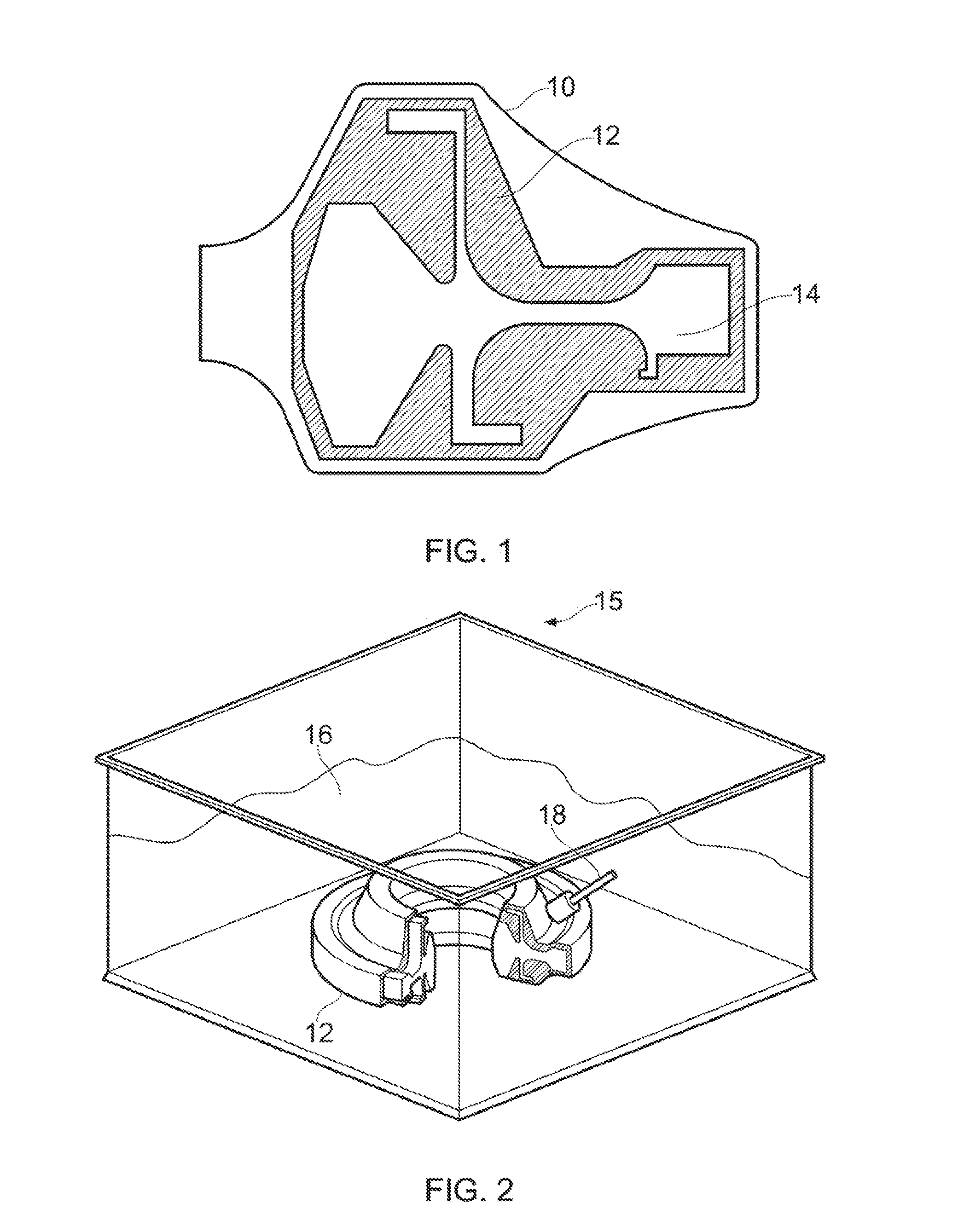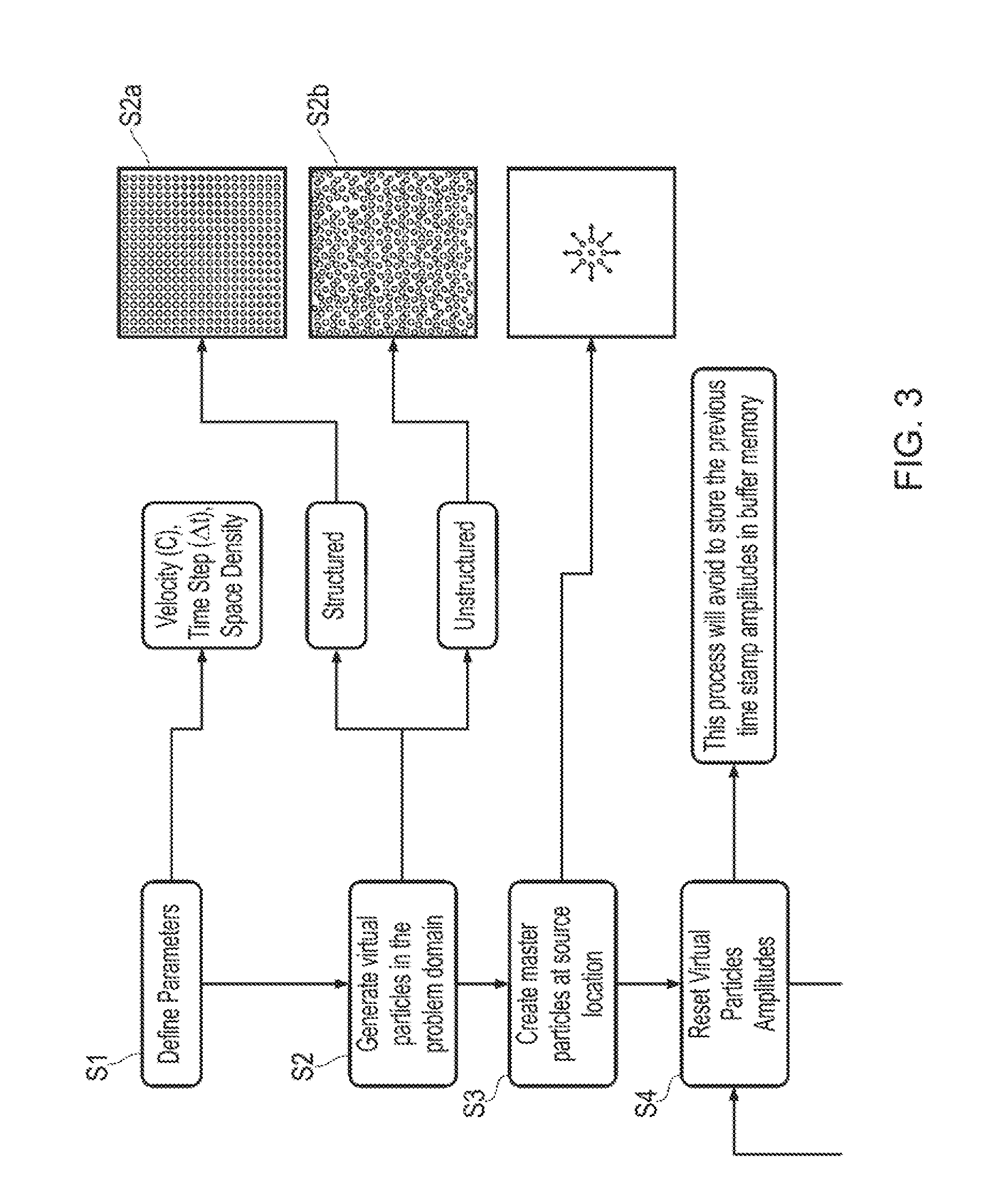Method of determining the magnitude of a field variable of an energy wave
a field variable and energy wave technology, applied in the field of simulating wave propagation, can solve the problems of computational cost, difficulty in distinguishing boundaries from defects in the model, and difficulty in direct determining wave propagation through a medium having complex boundaries in accordance with physical laws
- Summary
- Abstract
- Description
- Claims
- Application Information
AI Technical Summary
Benefits of technology
Problems solved by technology
Method used
Image
Examples
Embodiment Construction
[0033]FIG. 3 shows steps in a method of determining the magnitude of a field variable of an energy wave propagating through a medium with respect to time in accordance with the present disclosure. Example results of this simulation are shown in FIGS. 4a to 4c.
[0034]In a first step S1, parameters of the process are defined. These parameters include the velocity of the energy wave in question in the simulated medium (for example, the speed of sound c in the medium where the wave is a sound wave), as well as the initial amplitude of the wave, and the initial wavelength of the energy wave. Where the medium is anisotropic (i.e. the speed of sound c is dependent on the direction of travel), this parameter may comprise a direction dependent function. Further parameters include a desired temporal resolution (i.e. the difference in time At between time steps) and spatial resolution of master and virtual particles (which will be explained in greater detail hereafter).
[0035]In step S2, a prob...
PUM
| Property | Measurement | Unit |
|---|---|---|
| distance | aaaaa | aaaaa |
| energy | aaaaa | aaaaa |
| length | aaaaa | aaaaa |
Abstract
Description
Claims
Application Information
 Login to View More
Login to View More - R&D
- Intellectual Property
- Life Sciences
- Materials
- Tech Scout
- Unparalleled Data Quality
- Higher Quality Content
- 60% Fewer Hallucinations
Browse by: Latest US Patents, China's latest patents, Technical Efficacy Thesaurus, Application Domain, Technology Topic, Popular Technical Reports.
© 2025 PatSnap. All rights reserved.Legal|Privacy policy|Modern Slavery Act Transparency Statement|Sitemap|About US| Contact US: help@patsnap.com



